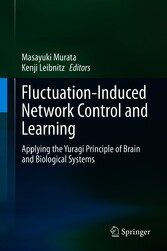Suche
Lesesoftware
Info / Kontakt

Fluctuation-Induced Network Control and Learning - Applying the Yuragi Principle of Brain and Biological Systems
von: Masayuki Murata, Kenji Leibnitz
Springer-Verlag, 2021
ISBN: 9789813349766 , 236 Seiten
Format: PDF
Kopierschutz: Wasserzeichen



Preis: 128,39 EUR
eBook anfordern 
Mehr zum Inhalt




